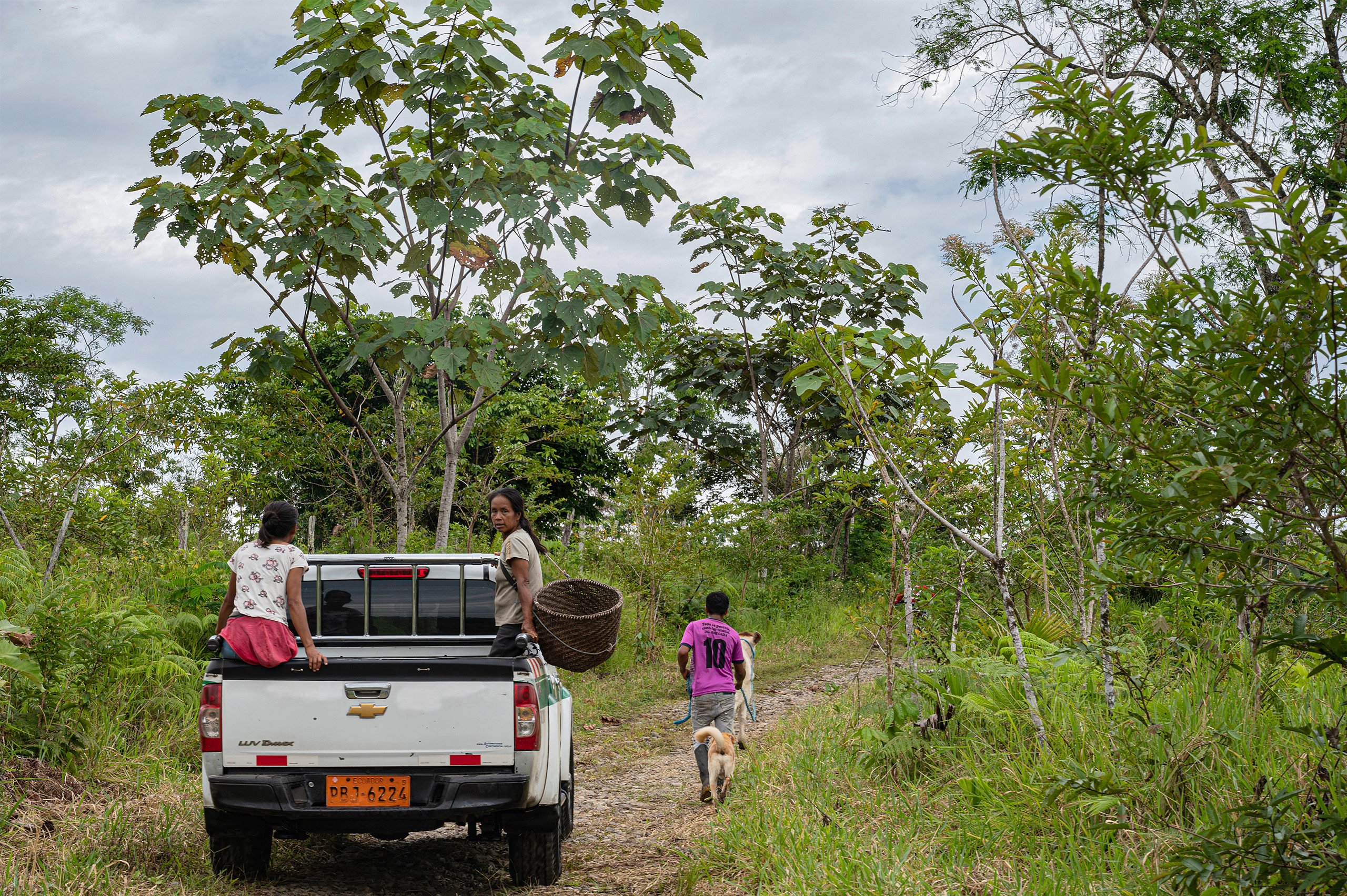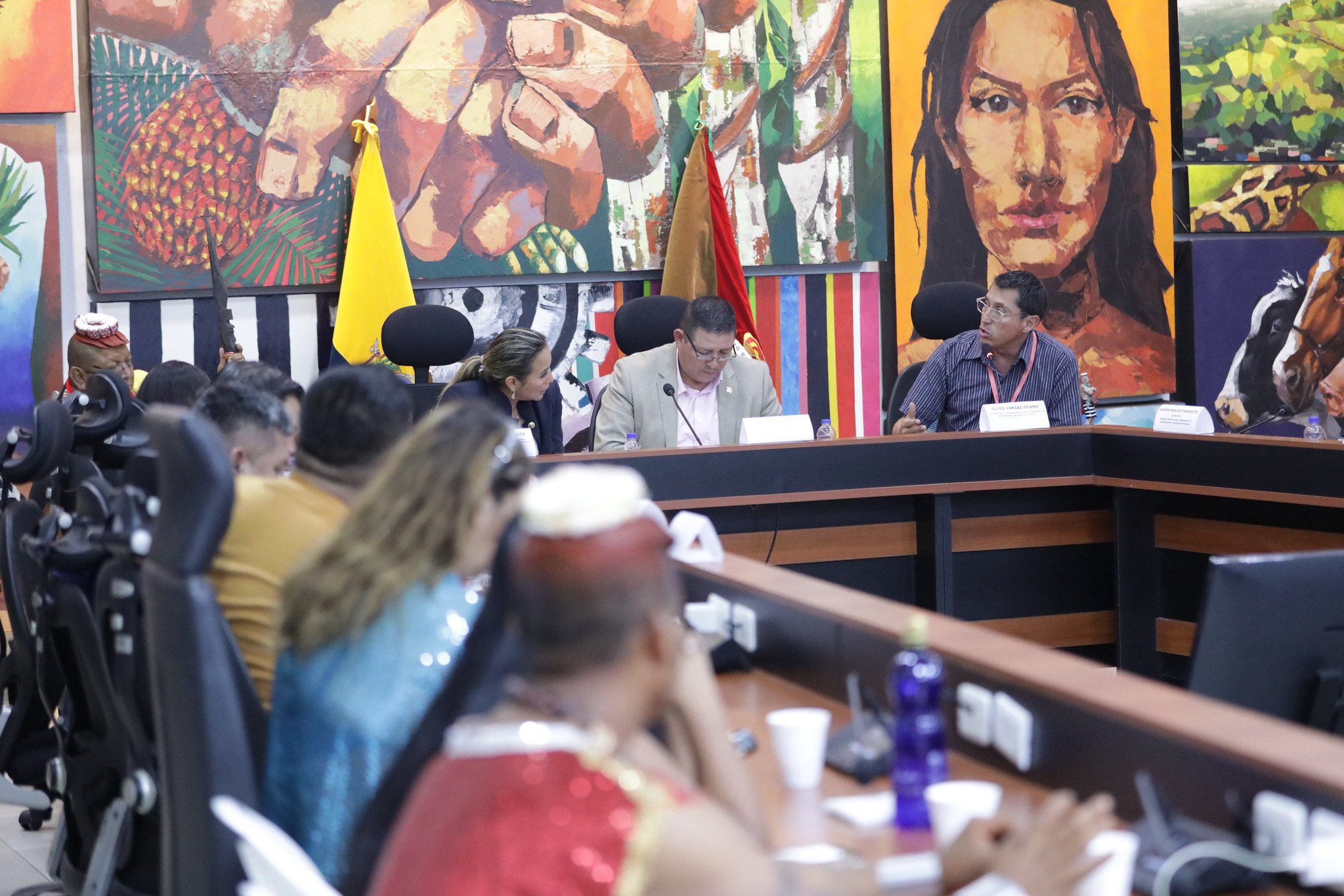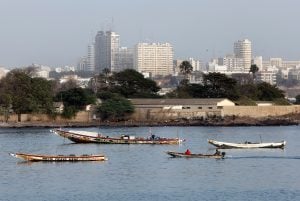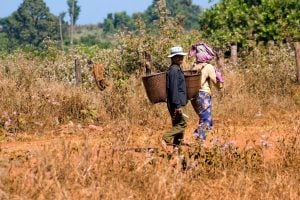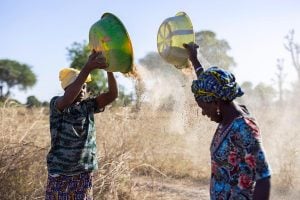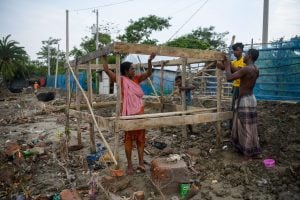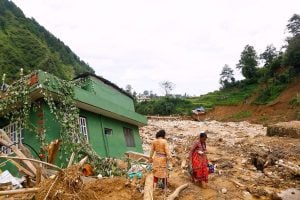In Ecuador, nature has been an entity with its own enshrined set of rights since the country’s current constitution was approved in 2008. Article 74 states that “environmental services shall not be subject to appropriation” and “their production, provision, use and exploitation shall be regulated by the state.”
Since the Ministry of Environment, Water and Ecological Transition (MAATE) issued regulations for a voluntary carbon market in June 2023, a debate has stirred in Ecuador around how such a trading system for carbon credits will fit with the country’s constitution, as well as its benefits and risks, and the participation of communities in its design.
Article 74, designed to protect ecosystems such as forests, has presented questions that Ecuador is still trying to answer: who gets to sell carbon credits and how?
On 17 September, the National Assembly approved a reform to the country’s organic code on the Environment that could regulate access to carbon markets and economic compensation for environmental services, subject to approval from the executive. However, the major constitutional question remains unresolved and will need to be addressed by Ecuador’s constitutional court, according to assembly members.
Selling carbon
Carbon markets enable the trading of certificates that represent a specific reduction in greenhouse gas emissions, or their removal from the atmosphere. These certificates are known as carbon credits, which are generated by activities that reduce or avoid greenhouse gas emissions, such as protecting forests.
One carbon credit represents one tonne of CO2 or carbon dioxide equivalent. They are mostly purchased by companies that need to comply with pollution-reduction mandates, or to access benefits.
There are two types of carbon markets: mandatory or compliance markets, typically established by national or international bodies to regulate high-emitting industries; and voluntary markets, which are more in demand among companies, as many look to reduce or offset their emissions. According to estimates by Ecosystem Marketplace, a non-profit dedicated to establishing the value of ecosystem services, voluntary carbon market trades reached more than USD 2 billion during 2021 – a steep rise from USD 520 million in 2020 – though this had contracted to USD 723 million by 2023.
Public and private actors in Ecuador are interested in regulating these carbon markets, as they believe the country has lost potential revenue due to the absence of a legal framework (the legality of the reformed organic code also remains to be seen). With more than half of its territory covered by forests, observers such as Ecuador’s former Undersecretary of Climate Change, Karina Barrera, see this as an opportunity for the country if it can introduce quality regulation.
“Poor regulation could cause the country to miss a unique opportunity to become a regional leader in integrity and attract investment for the fight against climate change, while improving people’s quality of life,” Barrera wrote in an article for environment and sustainability platform Youtopia.
However, the protections in the constitution and a general lack of information among stakeholders may be pushing this debate to other areas, and consequently pitting the needs of Indigenous peoples against private sector plans.
Indigenous people lack information
The 14 Indigenous nationalities of the Ecuadorian Amazon have long-established relationships with the region. Many are resistant to the idea of packaging these ecosystems as tradeable services.
Dialogue Earth spoke to Patricia Gualinga, an outspoken defender of Kichwa people. She is a leader of the Kichwa community of Sarayaku, located 200 kilometres south-east of Quito. “This mistrust is based on ignorance, negative experiences of extractive activities, or failed experiences of government programmes that did not fully meet the needs of the communities,” she says.
Gualinga claims that in the design of the regulation there has so far been “no proper consultation with Indigenous peoples, no effective participation. And the forests are mostly where the Indigenous peoples live.” She says her community has mapped out the environmental services of Sarayaku’s 146,000 hectares with the help of specialists.
Kichwa people are concerned about “the potential problems generated by external agents, who would like to take advantage of the environmental services,” Gualinga adds. She cites, for example, the threat of divisive opinions erupting within the community – “as has already happened with oil and mining activities”.
Few Indigenous communities are willing to speak openly about the issue, with official information said to be scarce. A sustainability expert from one such community, who spoke to Dialogue Earth on the condition of anonymity, said silence avoids “potential state or private reprisals”.
Official information on carbon market plans is reportedly being prepared by the government, in the form of a guide for guardians of carbon stores. According to reporting earlier this year by the Latin American Centre for Investigative Journalism (CLIP), the guide will detail the consultation processes for establishing carbon markets. It will also lay out environmental and social safeguards to protect the rights of communities, such as Kichwa people. Ecuador’s Ministry of the Environment, Water, and the Ecological Transition told CLIP that it had used as a reference United Nations materials on respecting such safeguards in forestry schemes, including rights of Indigenous peoples.
Among these materials are guides for economic compensation programmes that benefit communities protecting forests through reforestation projects, sustainable agriculture, and others. These projects are managed in coordination with the environmental ministries of the respective countries.
In a response given to CLIP reporters, representatives from MAATE rejected the claim that there had been no consultation on the voluntary carbon market regulation ahead of its June 2023 release, saying there had been an open public process involving more than 1,400 people from 202 institutions across 25 workshops. Among them, it insisted, were Indigenous participants, including from Confeniae, the regional organisation of Indigenous people in the Ecuadorian Amazon, though representatives said they were not aware of the law.
Indigenous leaders told CLIP that this process involved a large Zoom call to disseminate the regulation, followed by a short, 10-day window for comments on the document. Some interviewees told CLIP that they were unaware of the meeting, or the draft law, and highlighted difficulties in access to electronic equipment among Indigenous groups as a limitation to effective consultation.
Carbon reform
For the past two years, Ecuador’s National Assembly has been working on the legal framework that would enable the country to generate revenue from environmental services. This could provide structure to the issue of carbon sequestration. Among these is the reform of the organic code on environment, which has been subject to discussion by the National Assembly’s biodiversity commission.
However, one of the challenges the legislators of this commission have faced is unblocking the constitutional lock that prohibits the commercialisation of nature’s services.
Assembly member Milton Aguas told Dialogue Earth that the commission will consult the constitutional court for a ruling: “We have to make an evaluation, both of the constitution and of the international agreements signed by our country.”
Speaking ahead of the reform’s approval by the assembly, Aguas reported that the legislative commission had planned to engage with communities in various areas to discuss the reforms. This, he said, “will help the country establish specific processes so that communities, private entities, and local governments can make conservation projects profitable.”
The reform proposal recognises the different types of carbon markets, such as the international voluntary market. The legal framework would require the MAATE to register greenhouse gas reduction projects and, if applicable, authorise applicants. Once authorised, the applicant would seek certification for its carbon sequestration claims to enable the commercialisation of bonds.
Ecuador Zero Carbon
Another initiative launched to encourage the measurement and reduction of carbon emissions is the state’s Ecuador Zero Carbon programme, which is currently being implemented. According to Ángel Sandoval, the MAATE’s climate change undersecretary, the programme seeks to establish a compensation scheme for emissions reductions. This will be accompanied by a technical standard over the next 12 months.
Ecuador Zero Carbon aims to register any private company that wants to be certified for emissions-reduction efforts. This certification grants access to tax incentives and will ensure compliance with upcoming European Union trade requirements, expected in 2027.
“Companies that want to reduce their carbon footprint – either to achieve carbon neutrality or simply to reduce their carbon footprint – make contact with these companies and between them they agree on the prices they will pay for each carbon unit,” says Sandoval. He says the ministry so far has 547 private companies on its register that will participate in the programme.
Aglomerados Cotopaxi is one such company already participating. Founded in 1978, it produces boards, decorative mouldings and industrial packaging parts. The company claims to have a carbon-negative operation – its operations reportedly capturing more carbon dioxide than they emit.
According to Aglomerados Cotopaxi, its annual emissions amount to 34,700 tonnes of CO2 equivalent, while the trees it plants remove 225,000 tonnes. So, it claims to sequester 190,300 tonnes of greenhouse gases overall per year.
“We have 18,500 hectares of heritage, 30% of which is for conservation, which is more or less 5,000 hectares,” explains María Gallardo, Aglomerados Cotopaxi’s head of forestry research and development. “But these areas are distributed between remnants of native forest, ‘dwarf’ remnants that are like smaller basins (where there are water sources) and areas of grasslands.”
Carbon offsets via tree-planting schemes have become highly popular among companies and organisations looking to reduce their footprint, but have been increasingly beset by controversies. Concerns have been raised over their measurement, verification and effectiveness, undermining companies’ emissions reduction claims.
The challenge of transparency
Whatever the project, specialists say they must be credible if they are to work as intended. The climate finance expert Carina Sandoval believes Ecuador must increase the transparency of its institutions – a big challenge, which she says will nevertheless generate confidence among foreign markets.
“We had a debt-for-nature swap a year ago and the reports are still not coming out,” Sandoval says, claiming that “there is no transparency” around the public consultation processes relating to the project. Debt-for-nature swaps are arrangements in which creditor countries agree to reduce the value of another country’s debt, on the condition that they invest in conservation projects. In May 2023, Ecuador secured the largest swap on record, with USD 12 million a year reportedly set to be channelled towards conservation in the Galapagos Islands.
According to the experts consulted, the fundamental clash in visions between social and economic actors will make it difficult to create attractive compensation models that really work. At the very least, they say that greater transparency and better information could help both the private sector and Indigenous communities to make better decisions.
The reform to the organic code on the environment was approved amid an atmosphere of uncertainty due to Ecuador’s current energy crisis, driven by the impact of severe drought on its hydroelectric plants. The vote occurred the day before a nationwide blackout struck on 18 September, and went almost unnoticed by civil society sectors, who largely remain unaware of the scope of the reform, the legal implications of the existing constitutional lock, and who it will ultimately benefit.
Amid this scenario, the National Assembly must send the approved text to President Daniel Noboa, who has 30 days to veto or approve the document. If a total veto is issued, the legislature will not be able to revisit the text for one year. On the other hand, the president can veto the reform on constitutional grounds, in which case the Constitutional Court will have to issue a ruling. The fate of the reform now lies in the hands of the executive.

